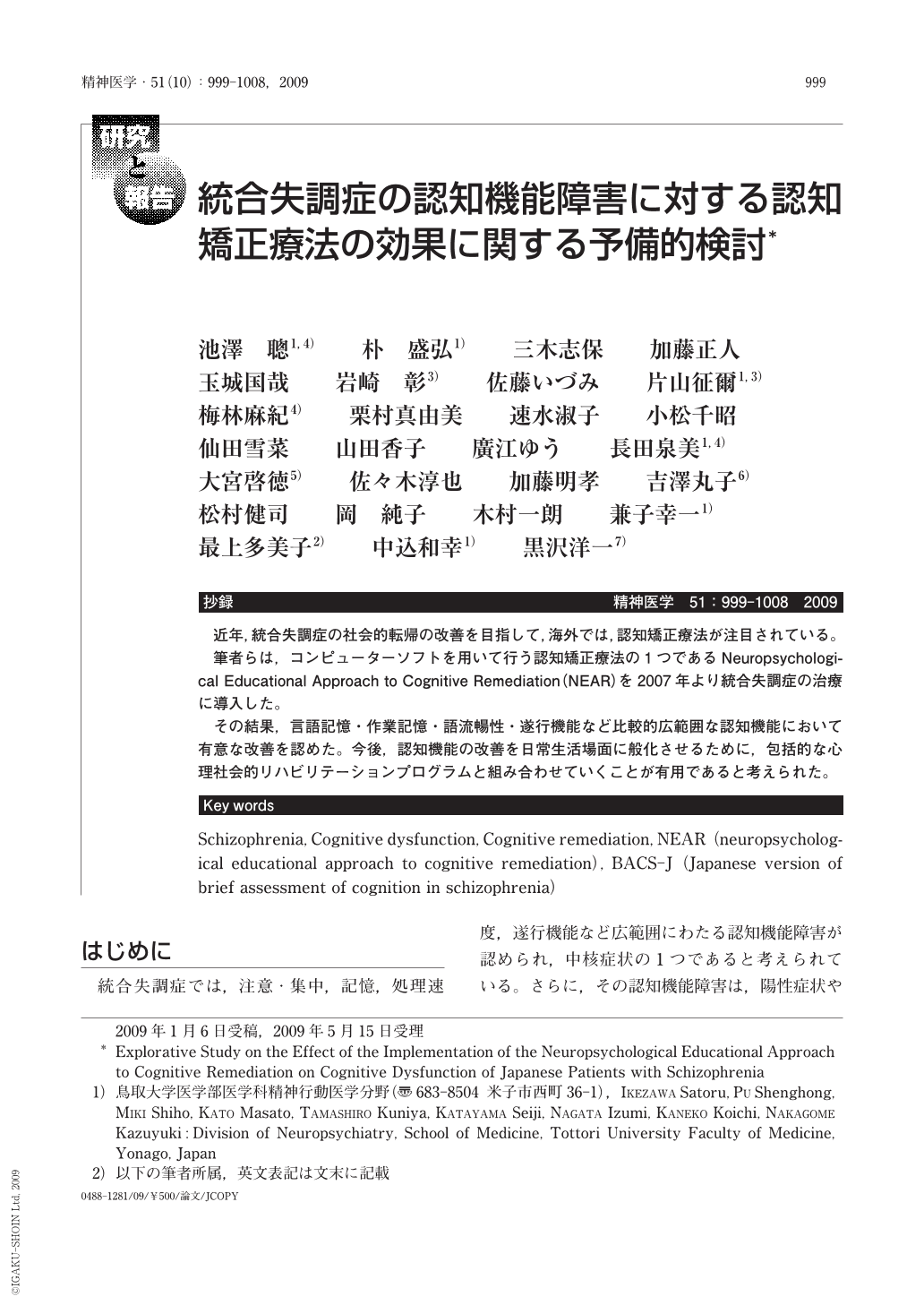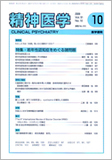Japanese
English
- 有料閲覧
- Abstract 文献概要
- 1ページ目 Look Inside
- 参考文献 Reference
- サイト内被引用 Cited by
抄録
近年,統合失調症の社会的転帰の改善を目指して,海外では,認知矯正療法が注目されている。
筆者らは,コンピューターソフトを用いて行う認知矯正療法の1つであるNeuropsychological Educational Approach to Cognitive Remediation(NEAR)を2007年より統合失調症の治療に導入した。
その結果,言語記憶・作業記憶・語流暢性・遂行機能など比較的広範囲な認知機能において有意な改善を認めた。今後,認知機能の改善を日常生活場面に般化させるために,包括的な心理社会的リハビリテーションプログラムと組み合わせていくことが有用であると考えられた。
It is widely accepted that cognitive dysfunction in schizophrenia plays a major role in determining the social outcome of patient. Cognitive remediation therapy was used for Japan with the aim of alleviating the many difficulties that these patients encounter in their social lives. After participating in the 1-week training program in America for clinicians on Neuropsychological Educational Approach to Cognitive Remediation (NEAR), we introduced the approach in Japan. The main aim of this study is to verify the efficacy of 1 year of NEAR sessions on the improvement of cognitive and social functions of patients in Japan.
Twelve patients with schizophrenia participated in the program which consisted of 2 one-hour sessions a week. Treatment efficacy was assessed in subjects who had completed approximately 6 months of NEAR sessions. In each session, subjects engaged in computer tasks that involved cognitive processing according to the subjects’ cognitive dysfunction profiles. In addition, a group meeting that aimed at promoting motivation and generalization of cognitive skills to daily life was held once a week.
We measured efficacy by comparing it with the following 3 scales: (a) The Japanese version of the Brief Assessment of Cognition in Schizophrenia (BACS-J) as a cognitive function scale, (b) The Life Assessment Scale for Mental Illness (LASMI) as a social function scale.
The findings of the present study can be summarized as follows; (a) patients showed significant improvement in cognitive function;however, such improvement was not seen in social function, (b) age of onset of illness was positively correlated with the improvement in attention, (c) NEAR attendance rate correlated positively with the improvement in skills required for activities of daily living, (d) baseline attention performance exhibited negative correlation with the improvement in interpersonal skills, (e) the improvement in executive function positively correlated with the improvement in skills required for daily life activites.
Although the sample size in the present study was small, our findings indicate that the application of NEAR was moderately effective in improving cognition in the case of Japanese patients, and some potential predictors of its efficacy were identified.

Copyright © 2009, Igaku-Shoin Ltd. All rights reserved.


